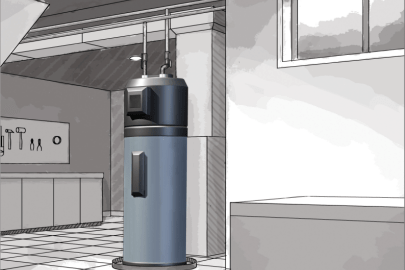Here further down you will find additional brilliant material concerning What Kind of Maintenance Do Water Heaters Need?.

Warm water is vital for day-to-day comfort, whether it's for a revitalizing shower or washing meals. To guarantee your hot water system runs effectively and lasts much longer, regular upkeep is vital. This article offers functional pointers and insights on exactly how to keep your home's hot water system to prevent disturbances and costly repair work.
Intro
Maintaining your home's warm water system might seem overwhelming, yet with a few easy actions, you can guarantee it operates smoothly for many years ahead. This overview covers every little thing from recognizing your hot water system to DIY maintenance ideas and recognizing when to call in professional help.
Value of Keeping Your Warm Water System
Regular maintenance not only prolongs the life expectancy of your warm water system yet also ensures it operates effectively. Ignoring maintenance can lead to decreased efficiency, higher energy expenses, and also early failing of the system.
Indicators Your Warm Water System Requirements Maintenance
Understanding when your hot water system needs interest can stop significant problems. Watch out for indications such as inconsistent water temperature, strange noises from the heater, or rusty water.
Understanding Your Hot Water System
Before diving into maintenance tasks, it's helpful to understand the basic components of your hot water system. Typically, this consists of the hot water heater itself, pipelines, anode rods, and temperature controls.
Regular Monthly Maintenance Tasks
Regular monthly checks can aid capture minor problems before they intensify.
Flushing the Water Heater
Purging your hot water heater gets rid of debris accumulation, enhancing performance and lengthening its life.
Monitoring and Replacing Anode Rods
Anode rods prevent corrosion inside the container. Checking and changing them when worn is essential.
Inspecting and Readjusting Temperature Level Settings
Adjusting the temperature setups makes sure optimal efficiency and security.
DIY Tips for Maintenance
You can execute numerous maintenance tasks on your own to maintain your hot water system in leading condition.
Checking for Leakages
Frequently examine pipes and links for leaks, as these can lead to water damages and greater expenses.
Evaluating Pressure Alleviation Valves
Testing the stress relief valve ensures it operates properly and prevents too much pressure build-up.
Protecting Pipes
Shielding hot water pipelines minimizes heat loss and can conserve energy.
When to Call a Specialist
While do it yourself maintenance is valuable, some problems call for expert knowledge.
Complicated Concerns Requiring Specialist Help
Examples consist of significant leaks, electric problems, or if your hot water heater is regularly underperforming.
Regular Expert Upkeep Advantages
Specialist maintenance can consist of extensive evaluations, tune-ups, and making sure conformity with safety requirements.
Verdict
Normal maintenance of your home's hot water system is necessary for performance, longevity, and expense financial savings. By adhering to these tips and knowing when to seek expert aid, you can make certain a dependable supply of hot water without unforeseen disturbances.
How to Maintain an Instant Hot Water Heater
Before tinkering with your hot water heater, make sure that it’s not powered on. You also have to turn off the main circuit breaker and shut off the main gas line to prevent accidents. Also turn off the water valves connected to your unit to prevent water from flowing into and out of the appliance. 2. When you’re done, you have to detach the purge valves’ caps. These look like the letter “T” and are situated on either side of the water valves. Doing so will release any pressure that has accumulated inside the valves while at the same time avoid hot water from shooting out and burning your skin. 3. When the purge valves’ caps are removed, you have to connect your hosing lines to the valves. Your unit should have come with three hoses but if it didn’t, you can purchase these things from any hardware or home repair shops. You can also get them from retail stores that sell water heating systems. Read the user’s manual and follow it to complete this task properly. When the hosing lines are connected, open the purge port’s valves. 4. You should never use harsh chemical cleaners or solutions when cleaning your unit. Make use of white vinegar instead. It should be undiluted and you’ll probably use about 2 gallons. 5. Now flush your water heater. This task should probably take about 40 minutes. We can’t give you specific directions for this because the procedure is carried out depending on the type, model and brand of your heater. With that being said, refer to the user’s manual. 6. When you’re done draining the unit, you have to turn off the purge port valves again. Remove the hosing lines that you earlier installed on each of the water valves. Put the valve caps (purge port) back in their respective places and be very careful so as not to damage the rubber discs that are found inside these caps. 7. Now that everything’s back in place, check your user’s manual again to find out how to reactivate your water heating system. 8. Once it is working, turn one of your hot water faucets on just to let air pass through the heater’s water supply pipes. Leave the tap on until water flows smoothly out of it. https://www.orrplumbing.com/blog/2014/september/how-to-maintain-an-instant-hot-water-heater/

As a keen person who reads about Tips For Maintaining Your Hot Water Heater, I figured sharing that editorial was a great idea. Are you aware of another person who is fascinated with the topic? Do not hesitate to share it. I praise you for being here. Return soon.
Get A Quote